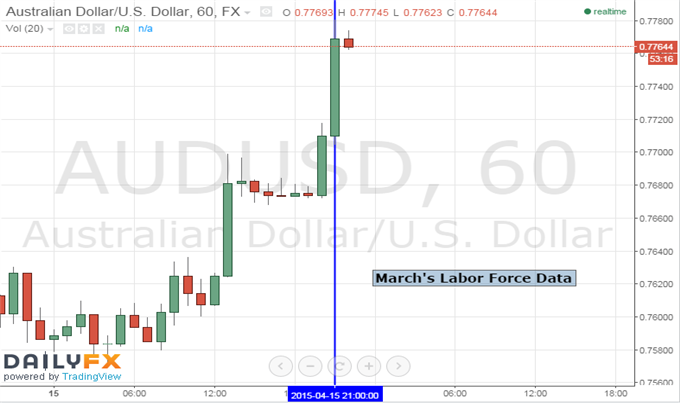Talking Points:
- Australian Dollar gains post labor force data release
- Unemployment Rate 6.1% vs 6.3% expected
- Australia adds 37.7K jobs in the month of March
The Australian Dollar climbed 76 pips versus the US Dollar as March’s labor force data topped estimates. Economists were expecting the country to add 15K jobs in the month of March; actual figures proved to be more on the upside with 37.7K jobs added. Most of the jobs gained came from the full-time figures which added 31.5K. The unemployment rate was also lower at 6.1% versus 6.3% expected. In addition, the participation rate also came in better at 64.8% versus 64.6% expected. February’s figures were also revised significantly higher.
Currency Strategist Ilya Spivak mentioned in his Aussie forecast that the central bank’s bias for further easing makes for a data-sensitive environment as traders weigh up news flow for the timing of the next rate cut. March’s overwhelmingly positive labor force data may support speculation about a further delay in the timing of RBA’s interest rate cut. The markets are now pricing in a 55% chance of a rate cut from the central bank during May’s meeting and overall 50bps of easing over the next twelve months.







